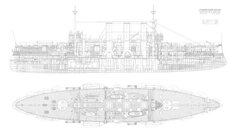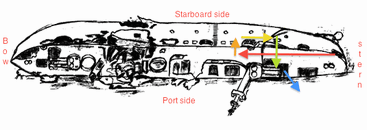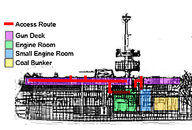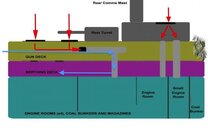DevonDiver
N/A
I'm trying to visualize this, and all of your description is helpful. But could I check on something? To me, looking at the drawings, it looks like the vessel is lying on her port side.... or is it that what looks to me like the bow is actually the stern (which would make the "lying on her starboard side" fit)?
I want to clarify this for myself because it will make the "more forward" or "further aft" entrance descriptions work better for me.
My bad. Was a typo. Have edited my post "vessel is laying on her port side".
What Leonard is describing is one of the "other" access points that I mentioned. There is a 2x1m hatchway into the gun deck that is located immediately behind the rear gun turret. Once through that access point, you are in the gun deck which stretches away aft (to the very rear of the boat) and stern (until it emerges in the 'broken open' section amidships). It also runs vertically from port to starboard, where there are a number of entrance hatches and side-gun turrets providing exits (some are very tight) onto the 'top' of the ship at 16-18m depth). The gun deck used wooden interior bulkheads, which are long rotted away, so the entire deck is open - except for a few structure
You can see the nature of these exits in the photo below. The ship had a number of smaller weapons along her sides. The guns in these positions are gone, so it permits some ambient light to illuminate that deck. After heavy rains, the low viz in that part of the bay wouldn't have allowed much light though..
View attachment 99240
Having entered through the hatchway described above, and found yourself in the expansive gun deck 'below' the rear gun, there are a number of options available for further penetration. A few very small hatches lead into the next deck level, which is the berthing/accommodation deck. You can also descend to the 'bottom' (port side) of the gun deck, where there is a passageway that takes you directly to the engine rooms.
Please forgive my very poor artistic and graphic skills; I have tried to illustrate a rough idea of the internal layout (Leonard/others, feel free to download that and improve it)...
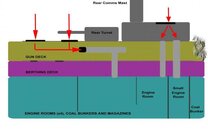
There's some more description of the wreck here:http://www.spanamwar.com/NewYorkwreck.htm
Wikipedia History: http://en.wikipedia.org/wiki/USS_New_York_(ACR-2)
More photos of the ship here:
http://www.navsource.org/archives/04/acr2/acr2.htm
http://www.history.navy.mil/photos/sh-usn/usnsh-n/ca2.htm
Last edited:



